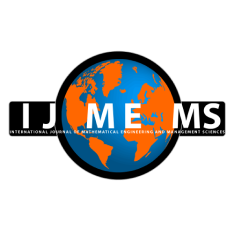P. K. Kapur
Center for Interdisciplinary Research, Amity University, Noida, India.
Himanshu Sharma
Department of Operational Research, University of Delhi, Delhi, India.
Abhishek Tandon
Department of Research, Indian Council of Social Science, Delhi, India.
Anu G. Aggarwal
Department of Operational Research, University of Delhi, Delhi, India.
DOI https://doi.org/10.33889/IJMEMS.2020.5.1.011
Abstract
Today, even a small street vendor in India provides the customer an option to pay electronically, using their wireless device. The businesses are aware that consumers are increasingly using smartphones to make payments for goods and services. Two types of mobile payments have been introduced by Indian retailers: wallet based and UPI (unified payments interface) based. With the government encouraging its cashless economy drive, it is backing UPI based mobile payment apps. Since earlier researchers studied the mobile payment adoption intention empirically, this study attempts to provide a mathematical model for adoption. The Bass model is used to study time based adoption pattern. Regression analysis was used to estimate the model parameters on BHIM app dataset, a UPI based government initiative. Findings show that the data fits the model well and the effect of coefficient of imitation is greater than that of innovation. Finally, discussions based on the results and implications for practitioners are provided. Future studies may use other extended versions of Bass model.
Keywords- Mobile commerce, Mobile payments, Innovation diffusion theorem, Bass model, BHIM App.
Citation
Kapur, P. K., Sharma, H., Tandon, A., & Aggarwal, A. G. (2020). Studying BHIM App Adoption using Bass Model: An Indian Perspective. International Journal of Mathematical, Engineering and Management Sciences, 5(1), 120-135. https://doi.org/10.33889/IJMEMS.2020.5.1.011.



